Email marketing is a powerful tool, as any marketer or business owner knows. You may have already implemented certain aspects of email customization, such as addressing clients by name, but you can go even further.
This article examines 15 email personalization strategies that you can use in your marketing.
Let’s explore whether email personalization actually works.
Is Email Personalization Effective?
A resounding “Yes” is the short answer. According to HubSpot’s State of Marketing study, 78 percent of marketers have noticed an increase in email engagement. According to HubSpot’s research, 20% of e-commerce, retail, consumer goods, and service businesses customize emails based on certain demographics.
Email personalization, or adapting email content to the recipient’s identity, interests, location, and other characteristics, can help boost sales.
Personalization of emails has a number of other advantages, including:
- Better open and click-through rates, as well as lower unsubscribe rates, lead to increased customer satisfaction
- Customers can be re-engaged in a variety of ways
- 72% of consumers only interact with personalized messaging, and the majority of customers expect brands to understand their specific demands
Personalization of emails is also simple to achieve. You could, for example:
- Only send an offer if the recipient has recently purchased anything
- Change the phrase depending on where you are or what time zone you are in
- Make the words and imagery more personal
Email customization, like any other aspect of marketing, has its limitations. Some methods, such as consumer suggestions, may or may not work for everyone.
You can also sound too familiar and over-personalize, which might frighten folks. Stick on the essentials, which we will explore later.
Here are 15 approaches that work now that you have a better understanding of email personalization and its benefits.
1. Collect the Right Data
You won’t have a suitable starting point for personalization if you don’t collect the correct kinds of data, by using sign-up forms to collect information from readers.
You can ask subscribers some additional questions when they sign up for your email list, in addition to the usual email address and name.
For instance, you could ask for their:
- location
- birthday
- interests
- occupation
Keep your requests for information short and sweet, then gather even more data, implement integrations.
If you don’t have all of the necessary resources to acquire data, integrations are ideal. You should also develop a subscriber preference center to find out what your readers want.
Personalize your subject lines once you’ve started collecting the correct kinds of data.
2. Personalized Subject Lines
In the world of email marketing, subject lines have always been crucial, but they must be specific for the best results. Ensure they differ from industry to industry and audience to audience.
You can put them to the test to see which ones are the most effective. You may use testing to change the content of your subject lines based on all the information you’ve gathered about a subscriber’s demands, interests, age, location, and more.
The open and conversion rates are only going to get better, and after you’ve mastered subject lines, you should concentrate on triggered emails.
3. Use Behavior-Triggered Emails
Customers’ interactions with your products or services prompt automated responses in the form of behavior-triggered emails.
This is where email marketing is going in the future, and triggered emails have a high open-rate.
These emails also allow you to connect with customers on a more personal level. Connections can be made easier with behavior-triggered emails. They allow you to communicate with customers without having to think about it, assist with reader conversion, and potentially increase the lifetime value of existing clients.
You may not know it, but you receive these types of emails on a regular basis.
Have you ever received an email from a website because you haven’t signed in or made a transaction in a long time? This is a behavior-based email.
Furthermore, you can send triggered emails for a variety of purposes, including to welcome readers, re-engage them, and promote items or services.
In addition, depending on your industry, there are a variety of solutions for sending effective trigger emails.
4. Use Subscriber Tags
Subscriber tags allow you to include personal CTAs in your email content as well as use them to send triggered emails. You can tag subscribers using this method based on their actions, such as visiting a specific page on your site or clicking on a link. Then, using matching tags, send emails to recipients.
Because you can segment all of your workflows with only one email, this method saves a lot of time. This is a feature that most email list providers, such as ConvertKit, provide.
5. Ask the Right Questions
Asking questions to your audience is a simple method to begin segmenting them. It’s a simple method, but you have to ask the right questions.
Customers, for example, can be asked:
- What drew them to your site in the first place?
- What made them decide to use your service?
- What are the most pressing issues that they require assistance with?
These questions may immediately reveal what you’re doing properly (or poorly), and they make sending targeted emails a snap, avoid getting too generic. Customers can be enticed with emotional appeals, emoticons, humour, and gifts to help you stand out.
Alternatively, you may ask for people’s opinions. People prefer to know that you care about what they have to say.
6. Add “Recommendations for You”
We’ve already discussed several email personalization strategies; now it’s time to dig a little deeper. Start customizing your emails by promoting additional purchases or actions based on a reader’s previous purchases or actions.
With its “Frequently Brought Together” upsell function, Amazon is well-known for this, while Netflix uses a similar strategy to entice users to watch another movie.
It works because readers love “recommendations” when they’ve previously enjoyed similar items.
Instead of attempting to reach all of your readers with a single promotion, send it only to those who have expressed an interest in a relevant topic.
You may accomplish this in any sector by recommending items and services that are related. To promote sales, consider offering a discount.
7. Use and Optimize Landing Pages
Yes, email personalization can help you increase the number of people who open your emails. The ultimate goal, though, is to turn readers into consumers.
To do so, make sure the landing pages you link to correspond to the concepts in the messages you send.
Consider what would happen if Amazon sent out product recommendations without any links to the real products. Doesn’t it appear pointless?
As a result, you should include as many relevant landing pages as possible in your emails. Make sure the landing page is relevant to the people you’re targeting and their current purchasing stage.
8. Add a Sense of Urgency
There are numerous tools available to assist you in incorporating dates and times into your emails.
This is an excellent strategy for increasing engagement because limited-time offers emphasize urgency, which motivates individuals to take action.
You can build up to a paid offer by establishing a sense of urgency. Just make sure your customers don’t forget to order or hesitate to do so. That’s why setting up a custom deadline is so useful.
Are you considering implementing this strategy? Templates are available online, or your mailing list provider should have one.
You may also integrate countdowns for sales, product releases, and giveaways into your emails.
9. Build Customer Personas
A customer persona is a fictional character who represents your ideal customer. Companies utilize them to determine the characteristics of their ideal customer as well as their typical behavior.
You’ll have a better understanding of who your consumers are and what they need from you if you become more precise with these personas. Finally, by meeting their wants, you may strengthen your business and boost email customization.
Customer personas are created utilizing a variety of data sources. Rather than asking a single question, you can classify clients based on a combination of traits and activities.
There are numerous step-by-step tutorials on creating personas available to assist you in developing them according to best practices, including:
- determining who your target market is
- Understanding your consumers’ requirements and frustrations through conducting research using data about your target audience’s online behavior, likes/dislikes, and other factors
- Using email personalization tactics to cater to the demands and needs of your consumers
10. Use Location and Time Zones
It’s no secret that certain times of day are better for sending emails than others.
For example, your consumers may prefer receiving an email at 8:00 a.m., while they may prefer receiving one at 5:00 p.m.
However, it’s unlikely that all of your clients are in the same place. They could be located all over the world, in different time zones, and maybe receive your emails at inconvenient hours.
How do you get around this? By utilizing your clients’ information to deliver emails at the most appropriate moments.
Personalization at the moment of delivery is simple to set up with a few clicks, and firms like MailChimp make it possible.
11. Personalize Your Business
You don’t have to limit email personalization to your customers’ information: you can also personalize your brand.
Customization has the potential to make a significant difference in your company’s success rate, and it’s not difficult to apply. You simply need to make a few adjustments, and many of these can be automated.
Nike is a great place to start if you’re looking for inspiration. Welcome messages and emails are sent out by the brand for:
- birthdays
- seasonal campaigns
- promotions
- order confirmations
- hot-this-week offers
Test things like conversational tone, words like “we” and “I,” and making your emails look like they’re coming from a real person. Customers respond positively to it.
12. Mark Milestones
Another successful email customization strategy is to mark client milestones.
It demonstrates to your customers that you are aware of their accomplishments and that your firm values them. As a result, consumer involvement improves, and they feel appreciated.
The following milestones are worth noting:
- the first anniversary of your customer
- a client’s birthday
- the amassing of a predetermined number of points
- completion of a course or something comparable
13. Imagery
A picture is said to be worth a thousand words. To put it another way, a single image can better represent a thought than a paragraph of writing.
People nowadays tend to skim scan emails on the go, so keeping your communications short is critical, but it’s not only about that. Your clients can be influenced by imagery in a variety of ways.
Marketers may use images in their emails to create an emotional connection with their customers, encouraging them to take action and possibly influencing their purchasing decisions.
Another benefit of photographs is their adaptability.
Images can be used for a variety of purposes, including presenting products, illustrating the benefits of a certain product, and simply brightening a customer’s day.
There are only a few things to think about.
The following images must be used:
- eye-catching
- eye-catching
- relevant
- You can also customize images for specific customers based on their data, preferences, and geography.
14. Reach Out to Customers
Cart abandonment, poor interaction, and a lack of follow-up all have an impact on your revenue. Email personalization, on the other hand, can help you overcome these obstacles.
Reaching out to customers can help them get back on track and avoid abandoning their shopping carts. You could, for example, send
- a coupon code in your abandoned cart emails
- an offer for something a customer looked at but didn’t buy
- an email asking why they left without buying and offering assistance
- a follow-up email three days after their visit
After that, get involved.
Sending out email tutorials or something similar is a good idea. Look at your data to understand how your customers use their purchases and where they most need your aid to tailor these communications.
Finally, make sure to follow up.
- Is your consumer aware of all the benefits that their purchase provides?
- Are there any features you think they should add?
- Is there anything unique about the product/service that could make a buyer’s life easier?
- Yes? Then follow up and help them with their issues!
15. Pay Attention to the Small Details
You can utilize email personalization in addition to the areas just mentioned:
- A/B testing different email versions
- depending on client data, modifying the copy of an email with each click
- dealing with any past interactions
- including a call to action
- dividing your target market into groups with comparable interests or uses for your product




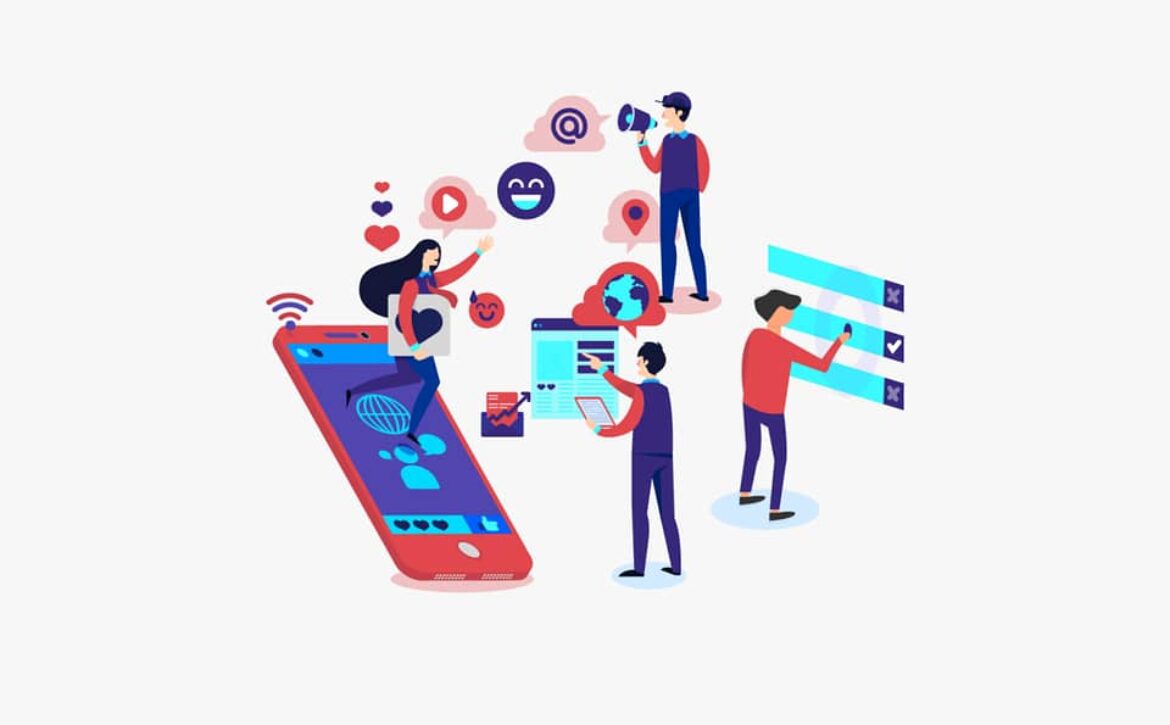


 Social media users have grown restless, worried, and occasionally sad as a result of the constant attack of content in their feeds for more than a year during lockdowns. Some people have even canceled their accounts after biting the bullet. It would be an understatement to suggest that the daily barrage of advertisements, campaigns, and news that floods
Social media users have grown restless, worried, and occasionally sad as a result of the constant attack of content in their feeds for more than a year during lockdowns. Some people have even canceled their accounts after biting the bullet. It would be an understatement to suggest that the daily barrage of advertisements, campaigns, and news that floods  The majority of businesses use segmentation to target clients with comparable demographics or related interests. Segmentation has been around for a while. Additionally, segmenting communication channels like e-newsletters, news, updates, or offers and promotions is a popular practice.
The majority of businesses use segmentation to target clients with comparable demographics or related interests. Segmentation has been around for a while. Additionally, segmenting communication channels like e-newsletters, news, updates, or offers and promotions is a popular practice. Even if you don’t personally invest in cryptocurrencies, it’s been hard to ignore the growth of NFTs and online currencies in recent years. On the surface, it might not seem like a trend that has an impact on your marketing plan, but in 2022, that’s not the kind of passivity we’re looking for!
Even if you don’t personally invest in cryptocurrencies, it’s been hard to ignore the growth of NFTs and online currencies in recent years. On the surface, it might not seem like a trend that has an impact on your marketing plan, but in 2022, that’s not the kind of passivity we’re looking for!
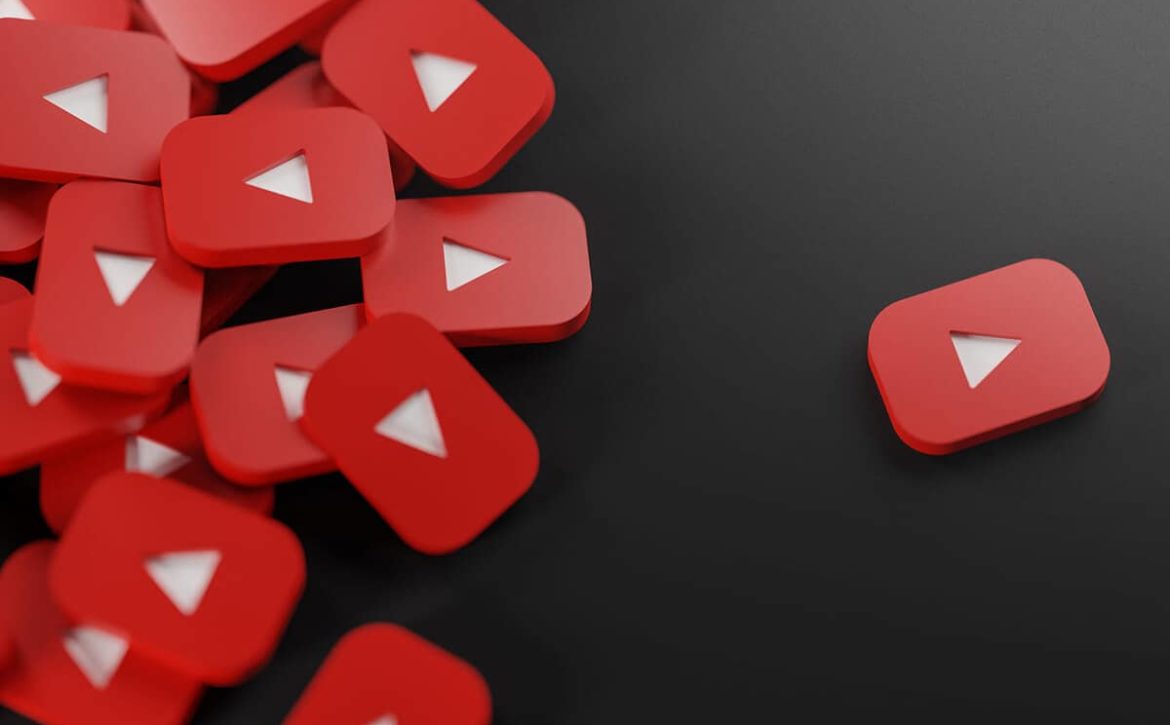
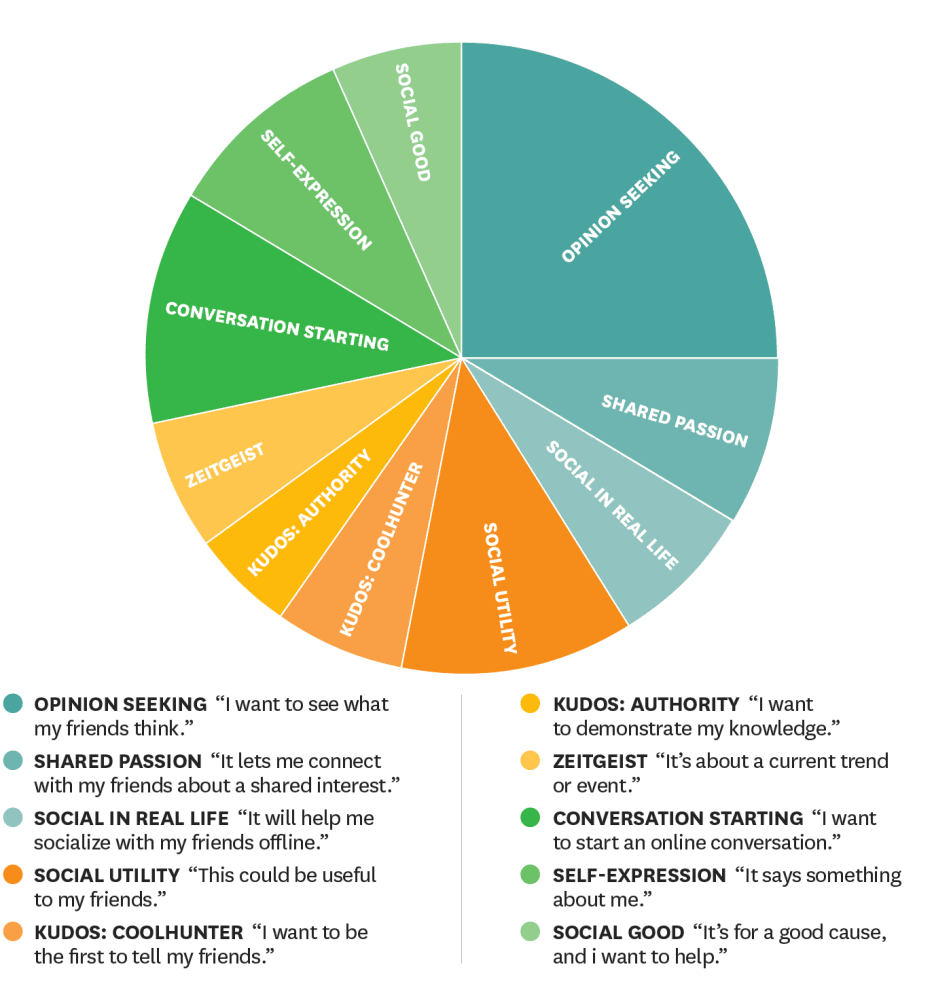 There are 10 reasons for sharing on
There are 10 reasons for sharing on 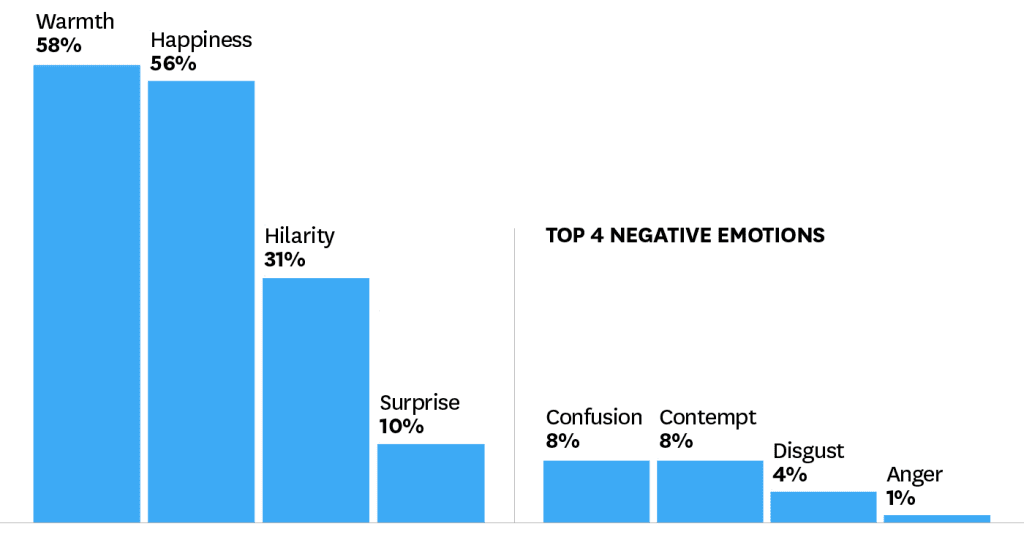 The majority of individuals believe that comedy encourages sharing, yet this belief is difficult to prove and culturally sensitive. To ensure that the material resonates, businesses should attempt to create a variety of pleasant emotions—again, the more vital the response, the better.
The majority of individuals believe that comedy encourages sharing, yet this belief is difficult to prove and culturally sensitive. To ensure that the material resonates, businesses should attempt to create a variety of pleasant emotions—again, the more vital the response, the better.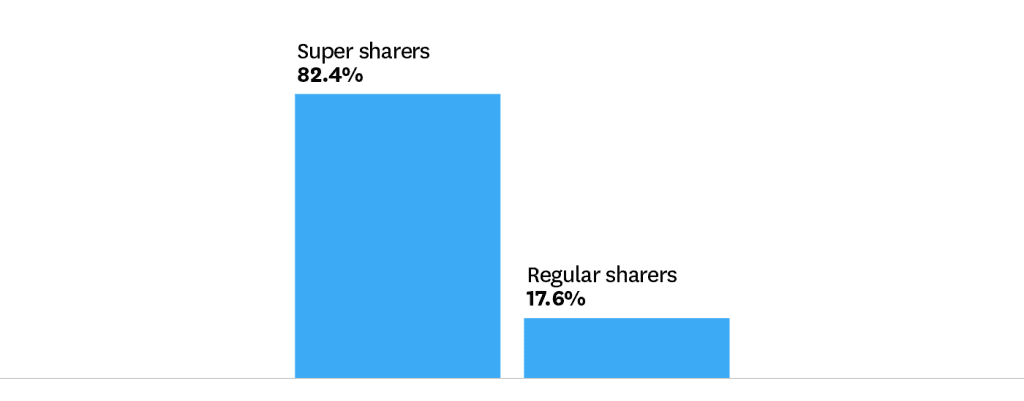 On average, 18% of internet users share movies at least once every week, and 9% do so every day. These “mega sharers,” who account for more than 45% of all shares, should be targeted by businesses.
On average, 18% of internet users share movies at least once every week, and 9% do so every day. These “mega sharers,” who account for more than 45% of all shares, should be targeted by businesses.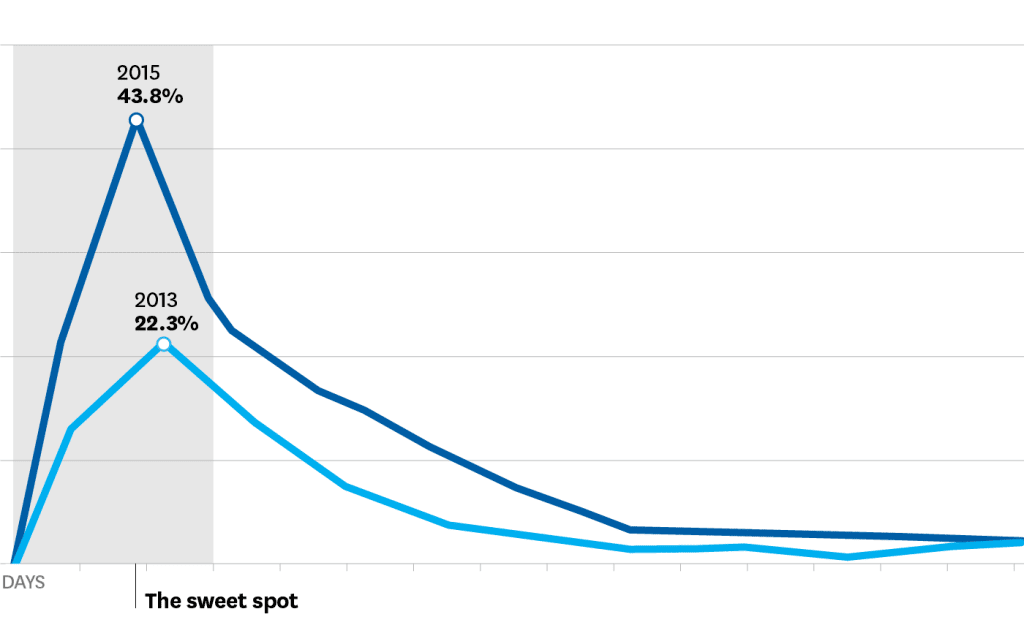 A video’s viral peak and total volume of shares increase with the number of shares it receives in the first two days following launch. Marketing professionals must think about front-loading initiatives to optimize exposure during this opportunity.
A video’s viral peak and total volume of shares increase with the number of shares it receives in the first two days following launch. Marketing professionals must think about front-loading initiatives to optimize exposure during this opportunity.

